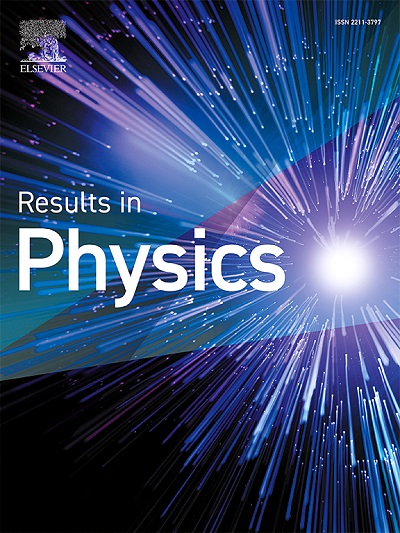Thermodynamic properties and the confinement frequency for Second Pὃschl-Teller potential
IF 4.4
2区 物理与天体物理
Q2 MATERIALS SCIENCE, MULTIDISCIPLINARY
引用次数: 0
Abstract
The study of thermodynamic properties for different potentials as a function of temperature and maximum quantum state have been widely reported. In the present study, the authors examined the effect of the total confinement frequency (which is a combination of a confinement frequency and cyclotron frequency ) on some thermodynamic properties such as the vibrational enthalpy, the vibrational Gibbs free energy and the vibrational entropy. The energy level of the Second Pὃschl-Teller potential model is obtained using supersymmetric approach and shape invariance formalism. Then, the vibrational partition function is calculated from the energy level of the Second Pὃschl-Teller potential model using the Poisson summation formula. The vibrational thermodynamic properties are calculated from the partition function and its derivative. The result shows that the presence of the total confinement frequency lowers the vibrational enthalpy and entropy but reduces the negativity of the Gibbs free energy. The result also showcases that the magnetic field which is the main term in the cyclotron frequency has less decreasing effect on the enthalpy and entropy compared to the frequency as part of the total confinement frequency.
求助全文
约1分钟内获得全文
求助全文
来源期刊

Results in Physics
MATERIALS SCIENCE, MULTIDISCIPLINARYPHYSIC-PHYSICS, MULTIDISCIPLINARY
CiteScore
8.70
自引率
9.40%
发文量
754
审稿时长
50 days
期刊介绍:
Results in Physics is an open access journal offering authors the opportunity to publish in all fundamental and interdisciplinary areas of physics, materials science, and applied physics. Papers of a theoretical, computational, and experimental nature are all welcome. Results in Physics accepts papers that are scientifically sound, technically correct and provide valuable new knowledge to the physics community. Topics such as three-dimensional flow and magnetohydrodynamics are not within the scope of Results in Physics.
Results in Physics welcomes three types of papers:
1. Full research papers
2. Microarticles: very short papers, no longer than two pages. They may consist of a single, but well-described piece of information, such as:
- Data and/or a plot plus a description
- Description of a new method or instrumentation
- Negative results
- Concept or design study
3. Letters to the Editor: Letters discussing a recent article published in Results in Physics are welcome. These are objective, constructive, or educational critiques of papers published in Results in Physics. Accepted letters will be sent to the author of the original paper for a response. Each letter and response is published together. Letters should be received within 8 weeks of the article''s publication. They should not exceed 750 words of text and 10 references.
 求助内容:
求助内容: 应助结果提醒方式:
应助结果提醒方式:


